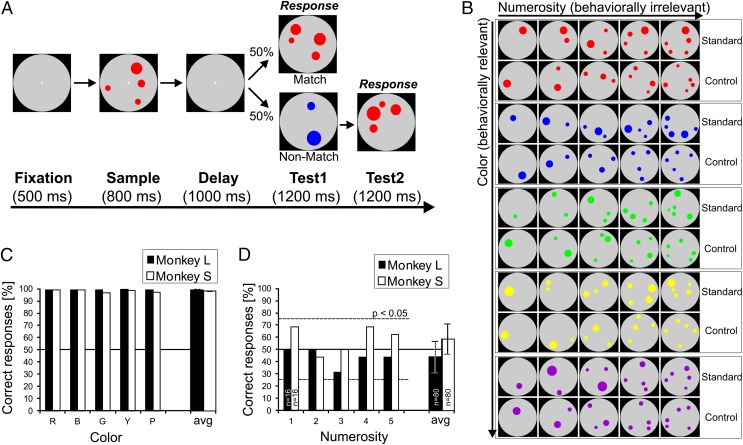Fig. 1.
Task protocol and behavioral performance. (A) Delayed match-to-color task. A trial started when the monkey grasped a bar. The monkey had to release the bar if the items in the multidot displays of the sample period and test period were of the same color, and continue holding it if they were not (probability of match/nonmatch condition = 0.5). The sample display contained one to five dots of the same color. (B) Example stimulus displays showing the variations of stimulus parameters. Each of the five (behaviorally relevant) colors was shown in five different (behaviorally irrelevant) numerosities, and as standard vs. area and density control stimulus displays, resulting in a three-factorial stimulus design. (C) Behavioral color discrimination performance of both monkeys during all recording sessions (50% is chance level). Both monkeys performed equally well and almost perfectly to all five colors (red, blue, green, yellow, purple). Avg, average over all colors. (D) Behavioral performance in the generalization tests to numerosity the monkeys were not trained to discriminate (all displays only black dots). Both monkeys showed chance performance to each numerosity and the average (dotted lines indicate binomial threshold at P = 0.05), confirming that they did not pay attention to numerosity. Error bars indicate SEM.

